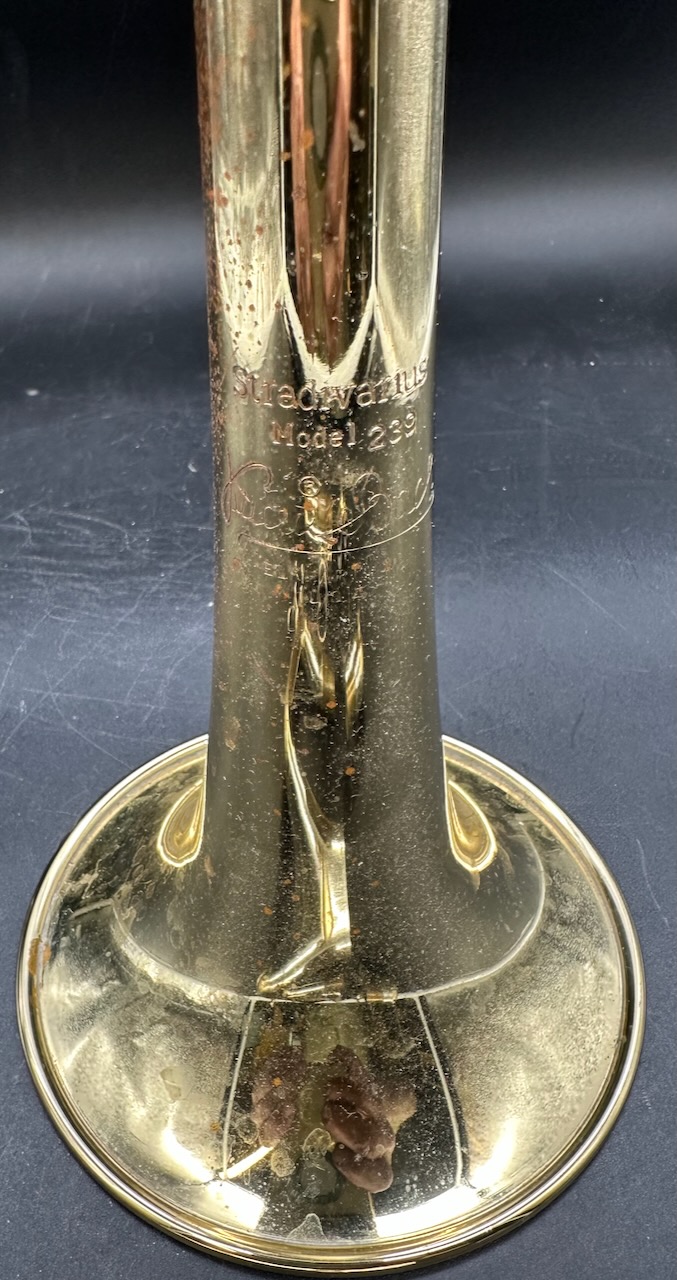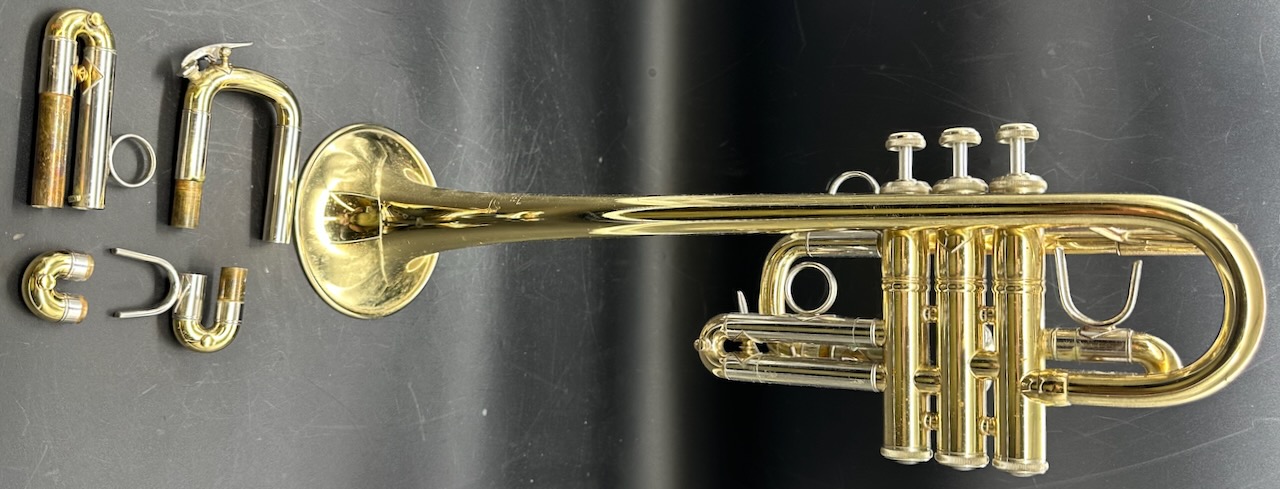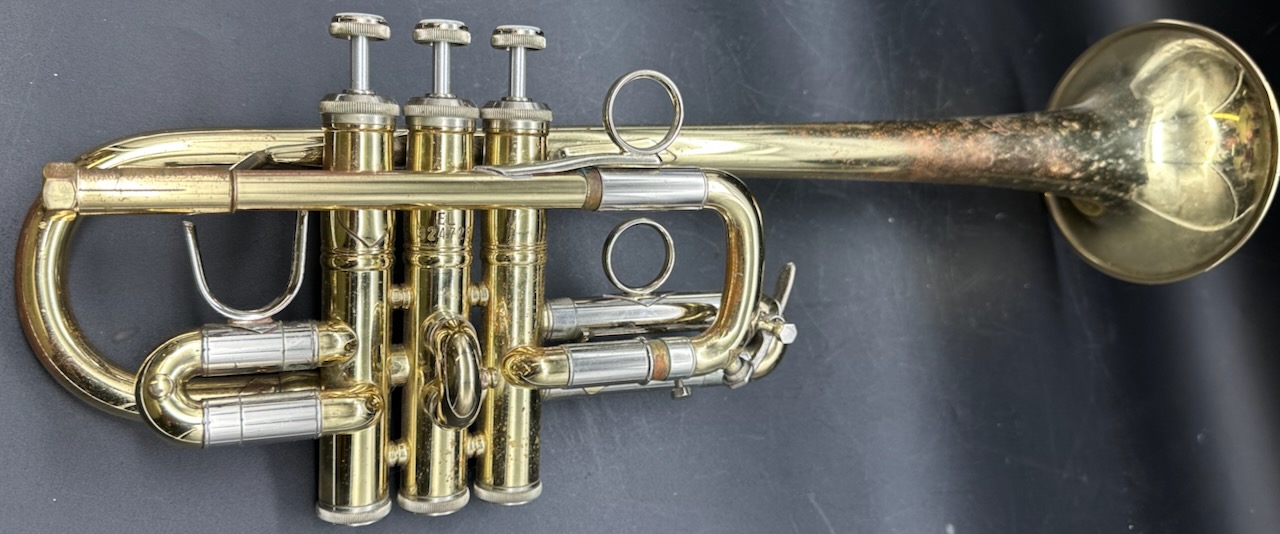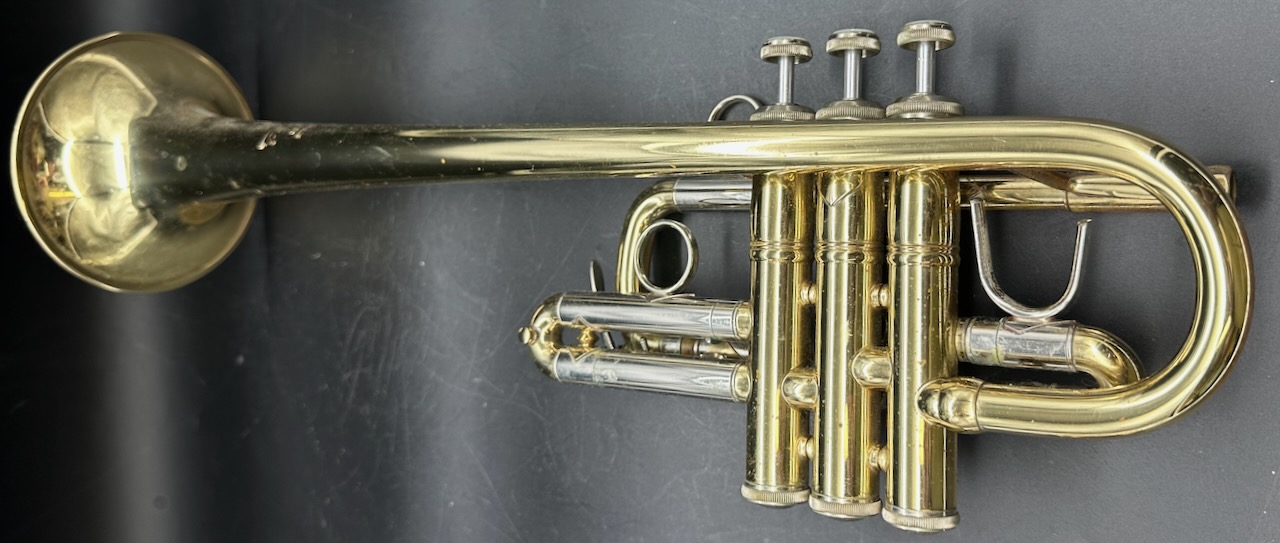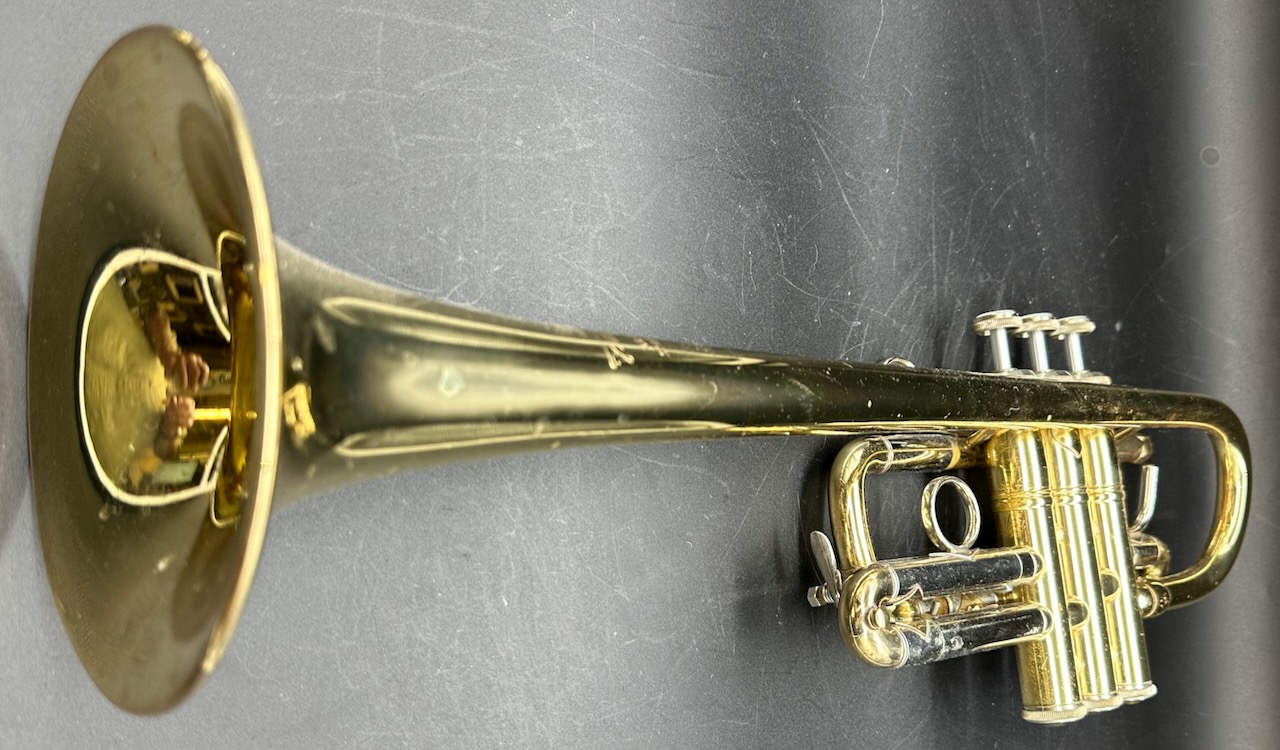Description
Bach 239 EL D/Eb S/n 324728 Long Bell
The bell is a 239 C trumpet bell It sounds and plays and projects a lot like a C trumpet just slightly brighter.
There’s some intonation quarks like all Bach trumpets, but any common alternate fingers can correct it just fine.
It does well with short shank backbores like Pickett brass/monette style to the point you don’t need alternate fingerings
There is some minor scratching around the horn body and minor spots of lacquer wear on and around hand contact areas.
The valve action is fantastic and compression is perfect the slides move freely and smoothly. It Comes with extra “D” slide set
Comes with a generic case, no Mouthpiece
This horn will be Sonically Cleaned and polished before sending out.
I wanted to get it on the site now. There is tarnish and slight water stains at some of the contact areas.
I think after the horn being sonically cleaned and polished this will not be much of a issue.
Trumpets in D and E♭ offer a variety of musical and technical benefits, especially for classical and orchestral players. Here’s a breakdown of the advantages of using D/E♭ trumpets:
1. Better Fit for Certain Repertoire
Many classical and romantic works were written with specific keyed trumpets in mind.
-
-
Haydn’s Trumpet Concerto (sounds brighter and more secure in the upper register)
-
Hummel’s Trumpet Concerto
-
Orchestral works by Brahms, Mahler, and Berlioz
D trumpet is ideal for:
-
E♭ trumpet is ideal for:
-
Classical solo works where E♭ was the original key
-
Some British brass band literature
-
Transpositions from piccolo trumpet parts to a slightly more stable instrument
2. Easier Transposition
D and E♭ trumpets make certain transpositions easier for the player, especially for:
-
Orchestral parts in high keys (A major, B♭ major, etc.)
-
Baroque transcriptions, when the piccolo trumpet might be too piercing or hard to blend
3. Improved Intonation and Sound Color
-
Compared to a B♭ or C trumpet, the D trumpet is tighter and brighter, making it more precise in upper tessitura.
-
E♭ trumpet has a slightly warmer tone than the D trumpet but is still more focused than a B♭.
4. Technical Agility
The shorter tubing of D and E♭ trumpets results in:
This is especially helpful in solo and concerto settings.
5. Better Blend with Strings
In chamber music or orchestral settings, D and E♭ trumpets often blend better with strings and woodwinds, compared to the more powerful C or B♭ trumpets.
6. Historical Authenticity
-
D/E♭ trumpets replicate the intent of Classical-era composers who expected a brighter, more vocal trumpet sound.
-
Period performances often call for keyed trumpets that match the key of the original work.

